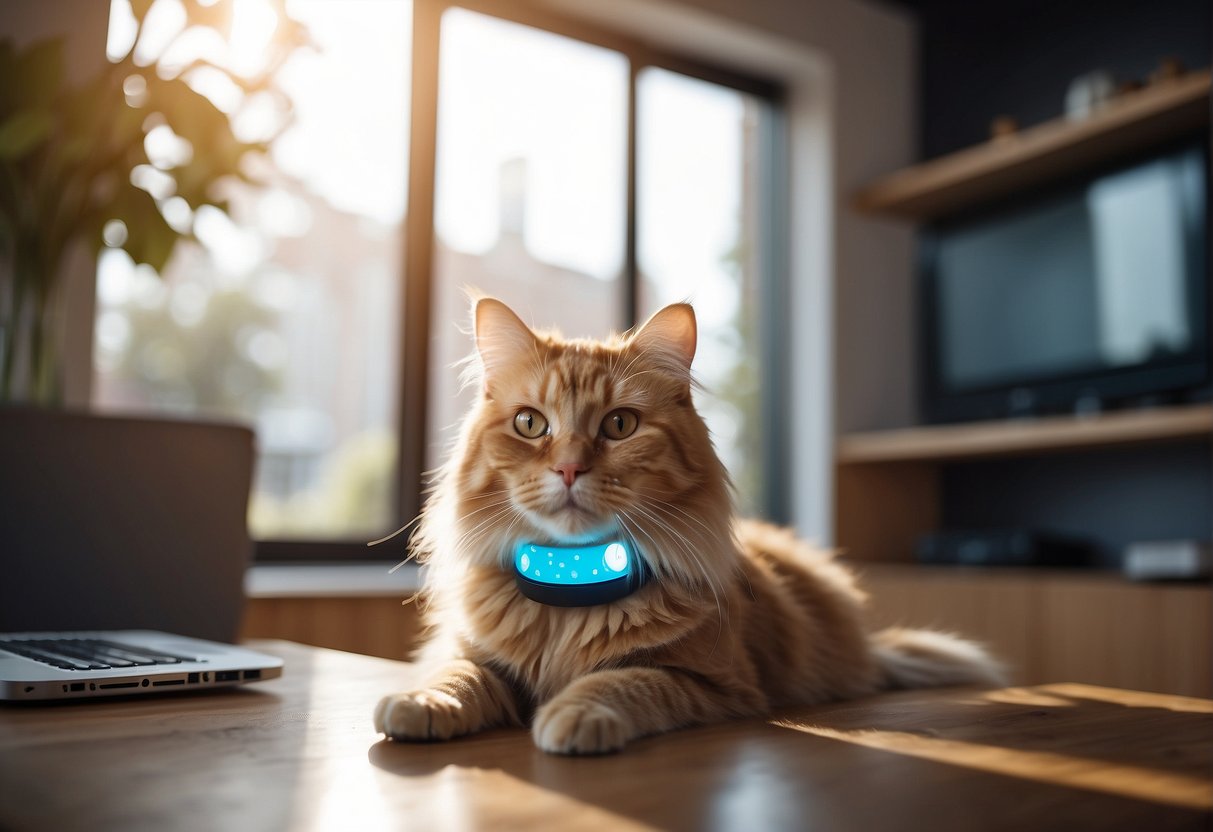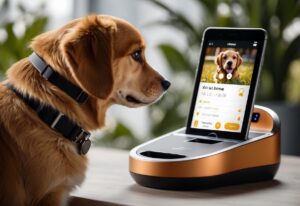Keeping your pets healthy and safe is a top priority for pet owners.
With the rise of the Internet of Things (IoT), pet owners now have access to a wide range of smart wearables that can help them monitor their pets’ health and safety.
These devices are equipped with various sensors that collect data on the pet’s movements, location, vital signs, and more.
By using these wearables, pet owners can stay informed about their pets’ health and well-being, and take action when necessary.
There are many different types of smart wearables for pets, including collars, tags, and small attachments that can be easily worn or attached to the pet’s body.
These devices can track a variety of metrics, such as activity levels, heart rate, and even sleep patterns.
Some wearables also have GPS capabilities, which can help pet owners locate their pets if they get lost.
Additionally, some wearables can monitor environmental factors such as temperature and humidity, which can be especially important for pets that are sensitive to changes in their surroundings.
Key Takeaways
- Smart wearables for pets can help pet owners monitor their pets’ health and safety.
- These devices can track a variety of metrics, including activity levels, heart rate, and sleep patterns.
- As the technology continues to evolve, we can expect to see even more innovative solutions that help pet owners care for their furry friends.
The Rise of IoT in Pet Care
As technology continues to evolve, it has brought significant changes to the pet industry.
Pet wearables are one of the most innovative areas in pet technology, and the rise of IoT has made it possible to create smart devices that enhance pet care.
Understanding IoT and Its Impact on Pet Technology
IoT or the Internet of Things refers to the connection of devices to the internet. This connection allows devices to communicate with each other and collect data.
In the context of pet technology, IoT has enabled the creation of smart devices that can track pet’s activities, monitor their health, and keep them safe.
The impact of IoT on pet technology has been significant.
Pet owners can now monitor their pets’ health and well-being remotely, which has reduced the need for frequent visits to the vet.
IoT-enabled devices can also help pet owners identify potential health issues before they become severe.
The Evolution of Pet Wearables
Pet wearables have come a long way since the first GPS-enabled collars were introduced.
Today, pet wearables come in various forms, including smart collars, activity trackers, and health monitors.
These devices can track a pet’s location, activity levels, and vital signs.
The evolution of pet wearables has made it possible for pet owners to keep their pets safe and healthy.
For instance, smart collars can alert pet owners when their pets wander beyond a specific area, while activity trackers can help pet owners monitor their pets’ exercise levels.
Health monitors, on the other hand, can detect changes in a pet’s vital signs and alert pet owners to potential health issues.
Types of Smart Wearables for Pets
Smart wearables for pets come in different types, each with its unique features and benefits. These wearables are designed to help pet owners keep their pets healthy, happy, and safe.
GPS Trackers and Activity Monitors
GPS trackers and activity monitors are among the most popular types of smart wearables for pets.
These devices are designed to track the location of pets and monitor their activity levels.
GPS trackers are particularly useful for pet owners who want to keep their pets safe by ensuring that they do not wander off or get lost.
Activity monitors, on the other hand, are designed to track the activity levels of pets.
These devices can help pet owners monitor their pets’ exercise routines and ensure that they are getting enough physical activity.
Some GPS trackers also come with activity monitoring features, allowing pet owners to track their pets’ movements and activity levels in real-time.
Health Monitoring Devices
Health monitoring devices are another type of smart wearable for pets.
These devices are designed to monitor the health of pets and alert pet owners to any potential health issues.
Some health monitoring devices are designed to track specific health metrics, such as heart rate, breathing rate, and temperature.
Other health monitoring devices are designed to track more general health metrics, such as activity levels and sleep patterns.
These devices can help pet owners identify any changes in their pets’ health and take appropriate action to address any issues.
Smart Collars and Tags
Smart collars and tags are another type of smart wearable for pets.
These devices are designed to provide pet owners with additional information about their pets, such as their location and activity levels.
Some smart collars and tags also come with health monitoring features, allowing pet owners to monitor their pets’ health in real-time.
Smart collars and tags are particularly useful for pet owners who want to keep their pets safe and secure.
These devices can help pet owners locate their pets if they go missing and ensure that they are not stolen or lost.
Benefits of Smart Wearables for Pet Owners
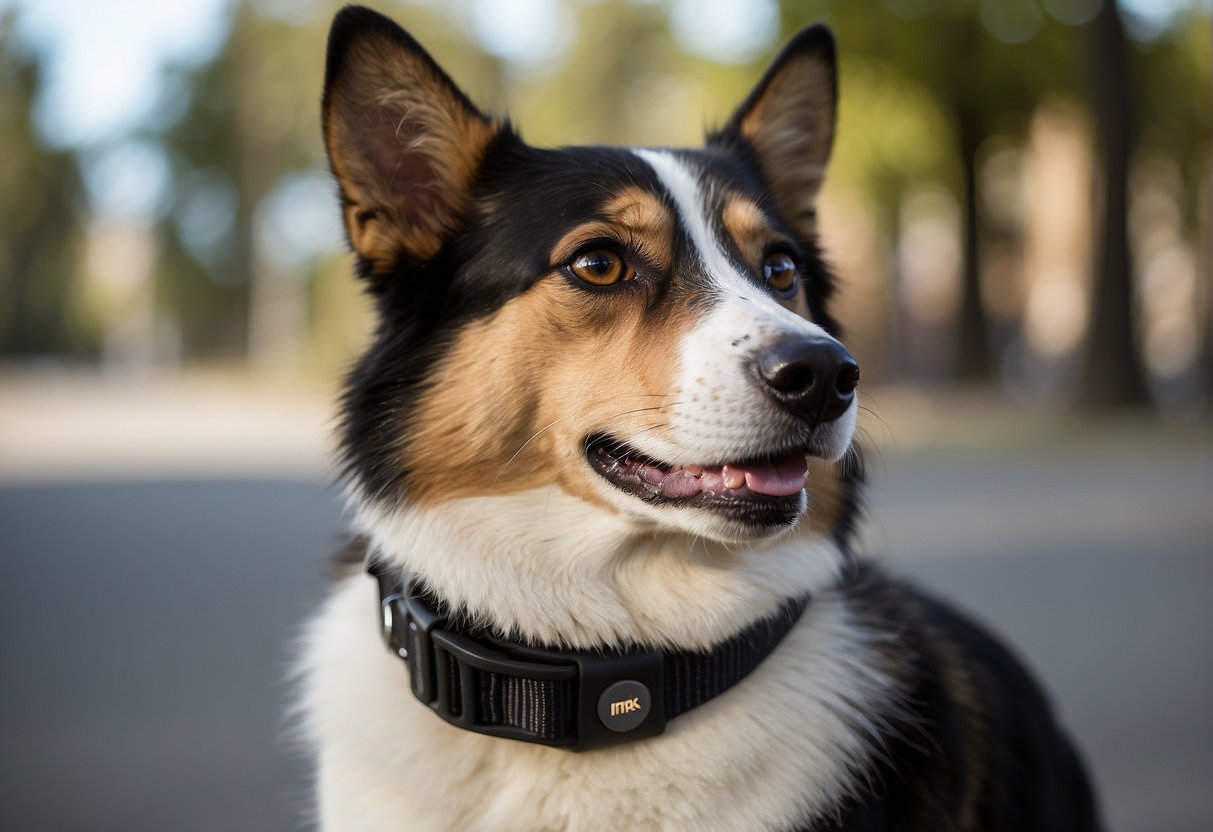
Smart wearables for pets are a rapidly growing market, and for good reason. They offer a range of benefits for pet owners, including real-time tracking and security, health and well-being insights, and enhancing the bond with pets.
Real-Time Tracking and Security
One of the primary benefits of smart wearables for pets is the ability to track their location in real-time.
With GPS-enabled collars and tags, pet owners can keep tabs on their pet’s whereabouts and receive notifications if they stray too far from home. This can provide peace of mind for pet owners, knowing that their furry friend is safe and secure.
In addition to location tracking, some smart wearables also offer security features such as geofencing.
This allows pet owners to set up virtual boundaries and receive alerts if their pet leaves the designated area. This can be especially useful for pet owners with large properties or pets that like to wander.
Health and Well-Being Insights
Smart wearables for pets can also provide valuable insights into their health and well-being.
Many devices are equipped with sensors that track activity levels, sleep patterns, and even vital signs such as heart rate and body temperature.
This data can be used to monitor a pet’s overall health and identify any potential issues early on.
In addition to monitoring health, some smart wearables also offer features such as calorie tracking and meal reminders.
This can help pet owners ensure that their pets are getting the right amount of food and exercise to maintain a healthy weight.
Enhancing the Bond with Pets
Finally, smart wearables for pets can also help enhance the bond between pet owners and their furry friends.
Many devices offer features such as remote treat dispensers and two-way communication, allowing pet owners to interact with their pets even when they’re not at home.
This can help alleviate separation anxiety and strengthen the bond between pet and owner.
Choosing the Right Smart Wearable for Your Pet
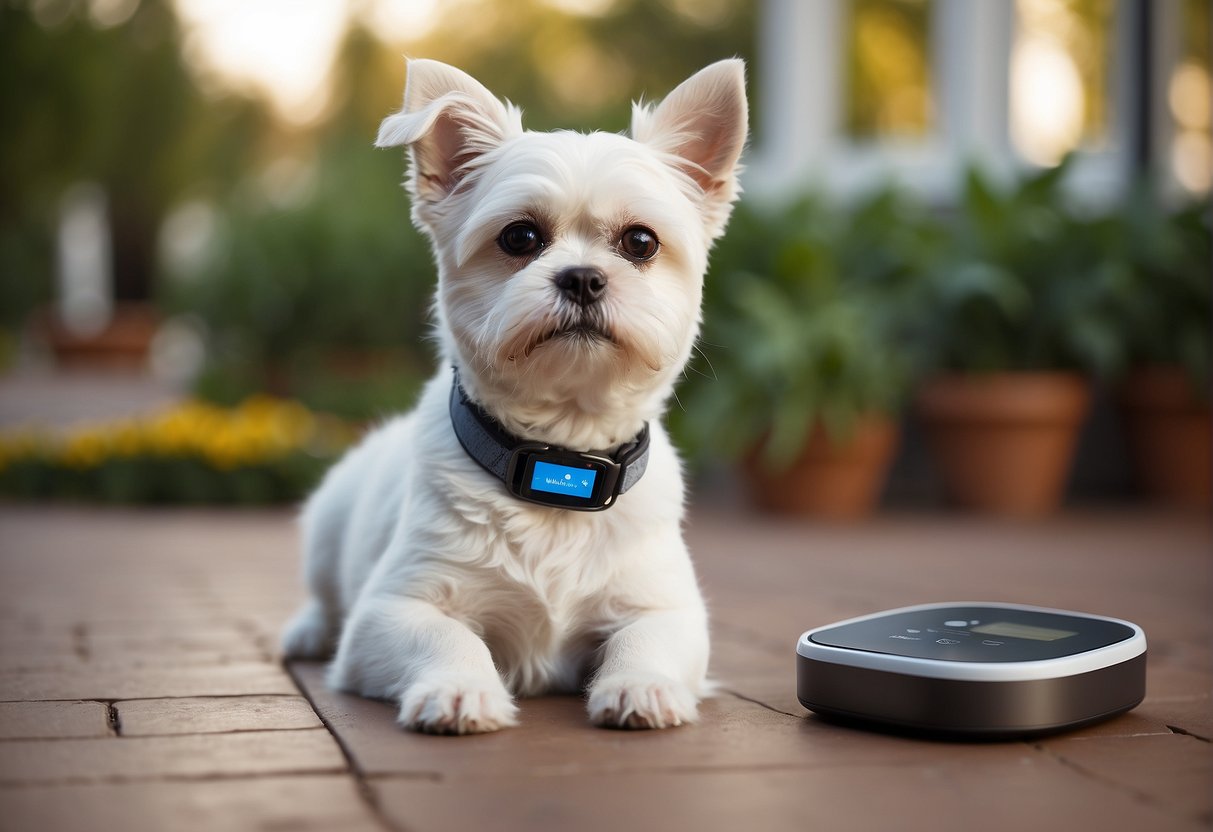
When it comes to choosing the right smart wearable for your pet, there are a few key features to consider.
Key Features to Consider
First and foremost, you’ll want to consider the features that are most important to you and your pet.
Some smart wearables come with GPS tracking, while others offer activity monitoring or health tracking. Some even offer features like remote training or behavior correction.
It’s important to think about what features will be most useful for your specific pet and lifestyle.
For example, if you have an active dog that loves to run, you may want to look for a wearable with GPS tracking and activity monitoring.
On the other hand, if you have a senior pet with health issues, you may want to look for a wearable with health tracking features.
Compatibility with Your Lifestyle
Another important factor to consider is how well the smart wearable will fit into your lifestyle.
Some wearables require a lot of maintenance or charging, while others are more low-maintenance.
You’ll also want to consider whether the wearable is compatible with your smartphone or other devices.
If you’re someone who travels frequently or spends a lot of time outdoors, you may want to look for a wearable that is durable and waterproof.
On the other hand, if you’re someone who prefers a more minimalist approach, you may want to look for a wearable that is lightweight and unobtrusive.
Safety and Comfort for Your Pet
Last but not least, it’s important to consider the safety and comfort of your pet when choosing a smart wearable.
You’ll want to make sure that the wearable is designed with your pet’s comfort in mind, with features like adjustable sizing and breathable materials.
You’ll also want to consider the safety features of the wearable, such as whether it has a built-in emergency button or a lost pet mode.
Some smart wearables even offer features like temperature monitoring to ensure that your pet stays safe and comfortable in all weather conditions.
Integration with Smart Home Technology
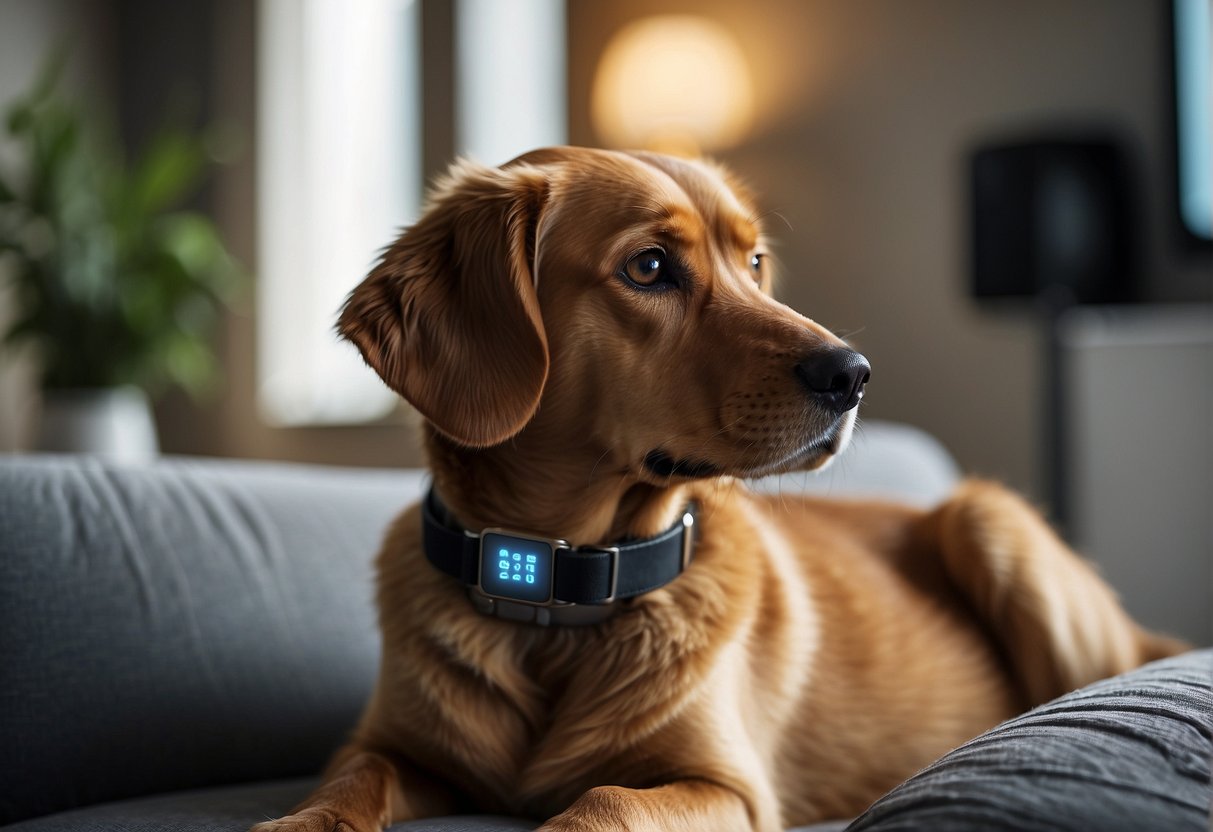
The integration of IoT smart wearables with smart home technology can greatly enhance the safety and health of pets.
Automated feeders and pet doors can ensure that pets are fed and have access to the outdoors at the appropriate times.
Surveillance and interaction with pet cams can provide owners with peace of mind and allow them to monitor their pets’ behavior and health.
Automated Feeders and Pet Doors
Smart technology has made it possible to automate the feeding and access of pets to the outdoors.
Wi-Fi enabled feeders can be programmed to dispense food at specific times, ensuring that pets are fed even when owners are away from home.
Smart pet doors can also be programmed to allow pets to enter and exit the house at specific times, preventing them from wandering outside unsupervised.
Surveillance and Interaction with Pet Cams
Pet cams are another important aspect of smart home technology that can greatly enhance the safety and health of pets.
With pet cams, owners can monitor their pets’ behavior and health in real-time, allowing them to detect any potential health issues or dangerous situations.
Some pet cams even have two-way audio, allowing owners to interact with their pets remotely.
Future Trends and Innovations in Pet Wearables
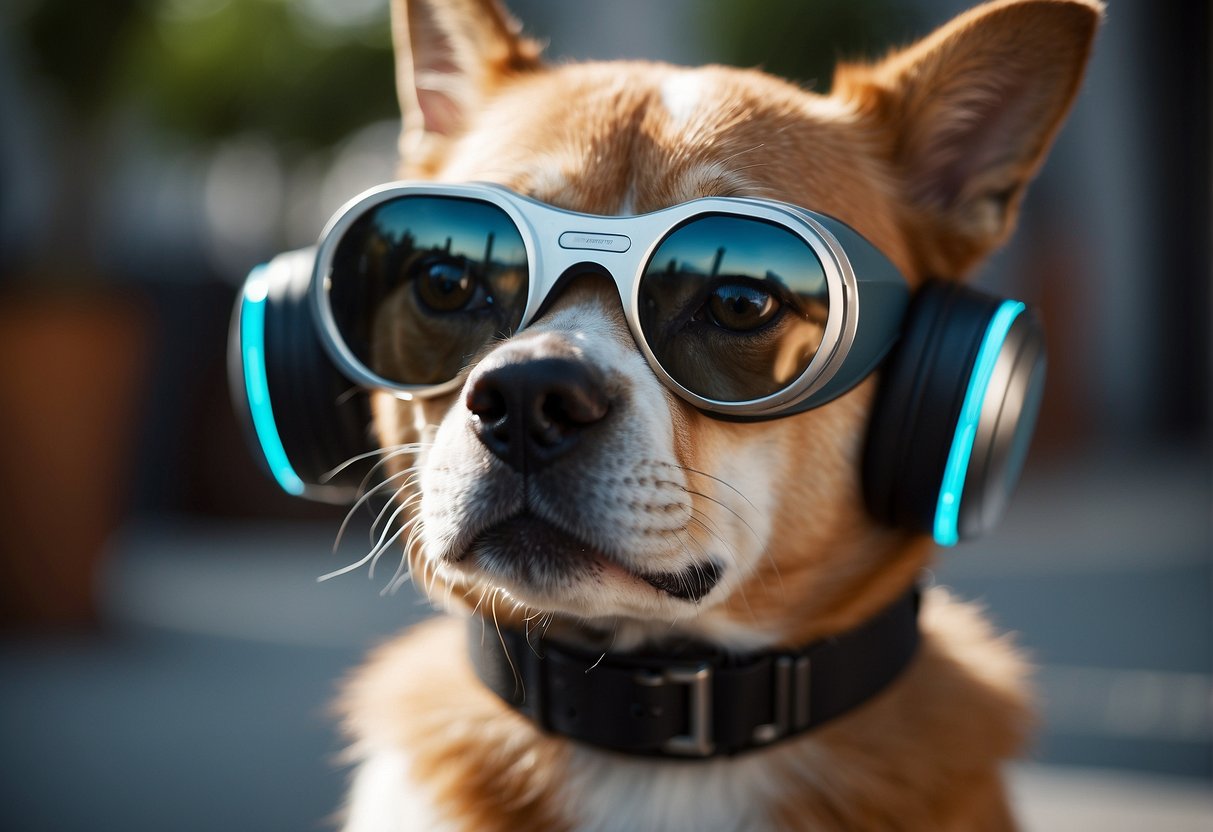
As the pet tech market continues to grow, so do the advancements in sensor technology and the role of AI and machine learning in pet wearables. These innovations are making it easier than ever to keep our furry companions safe and healthy.
Advancements in Sensor Technology
One of the most exciting trends in pet wearables is the use of advanced sensors to monitor a pet’s health and behavior.
Sensors can track everything from a pet’s activity levels to their heart rate and body temperature, providing valuable insights into their overall well-being.
Some of the latest sensor technologies include:
- GPS tracking: This allows pet owners to keep tabs on their pet’s location in real-time, making it easier to find them if they get lost.
- Accelerometers: These sensors can detect a pet’s movements and activity levels, providing valuable information about their exercise routine and overall health.
- Temperature sensors: These sensors can monitor a pet’s body temperature, which can be an early indicator of illness or other health issues.
The Role of AI and Machine Learning
Another trend in pet wearables is the use of AI and machine learning algorithms to analyze the data collected by sensors.
These algorithms can identify patterns and trends in a pet’s behavior, providing valuable insights into their health and well-being.
For example, some pet wearables use machine learning algorithms to detect when a pet is scratching excessively, which can be a sign of allergies or other skin issues.
Other wearables can use AI to detect changes in a pet’s gait, which can be an early sign of joint problems or other issues.
Overall, the continued growth of the IoT industry is driving innovation in pet wearables, making it easier than ever to keep our pets safe and healthy.
With advancements in sensor technology and the use of AI and machine learning, pet owners have access to a wealth of information about their furry companions, allowing them to make more informed decisions about their care.

